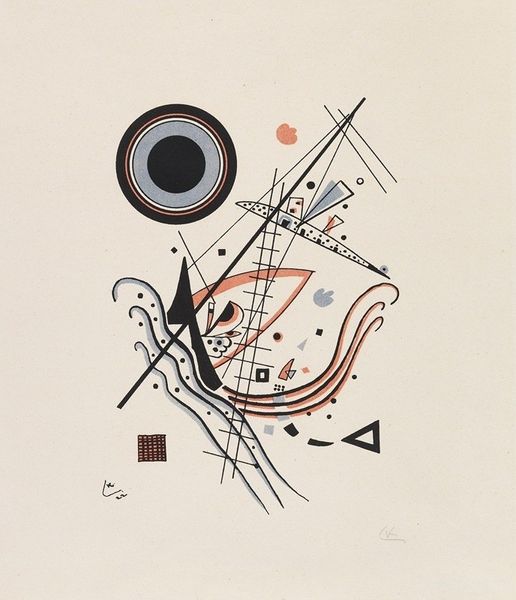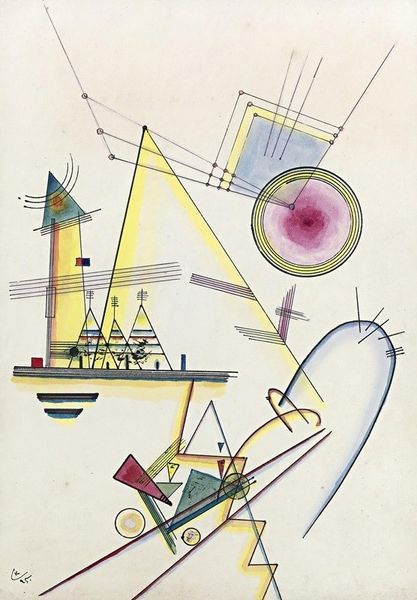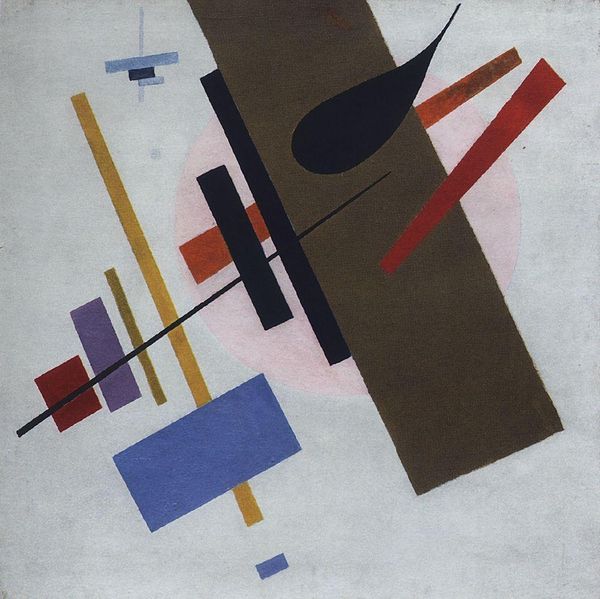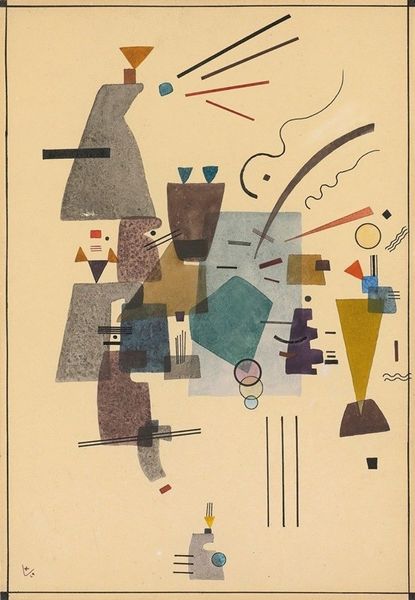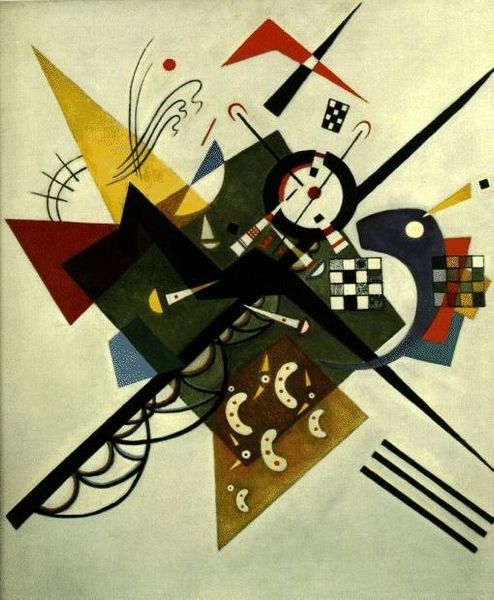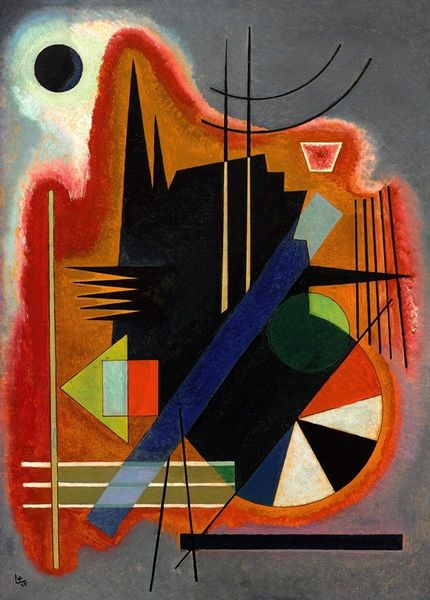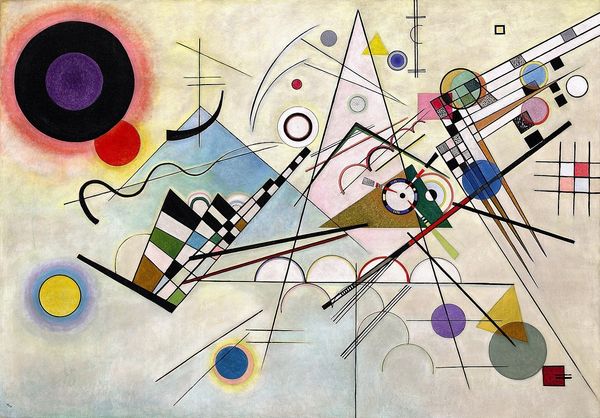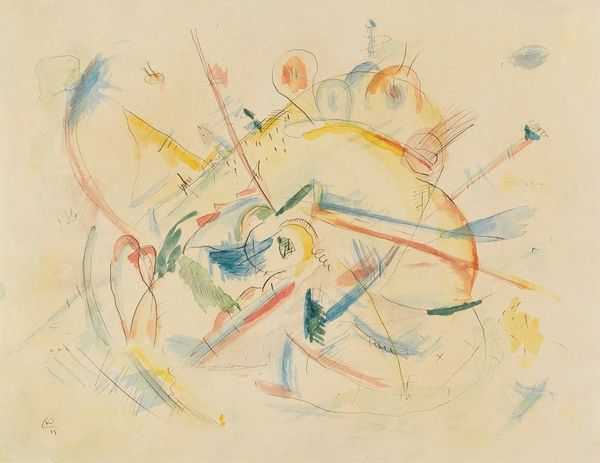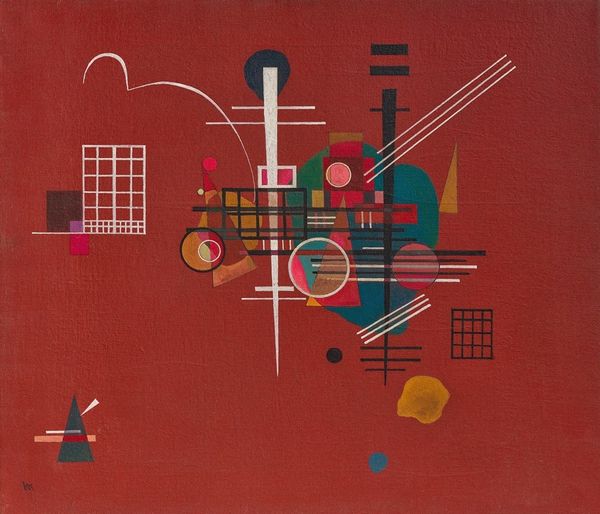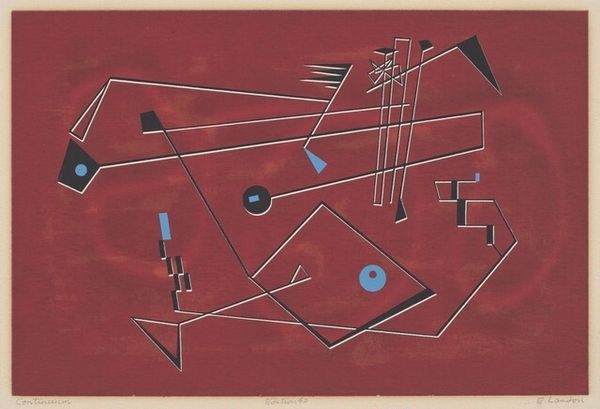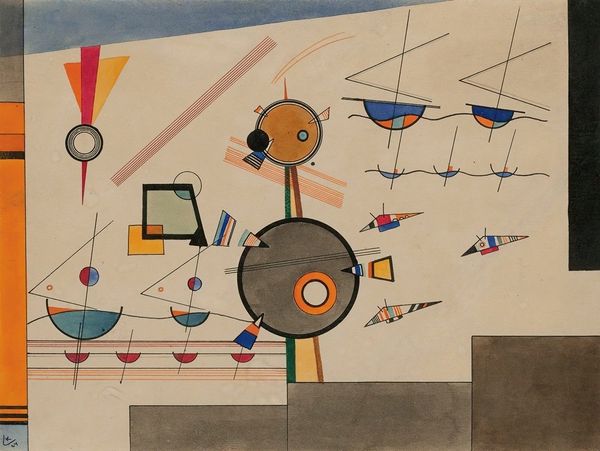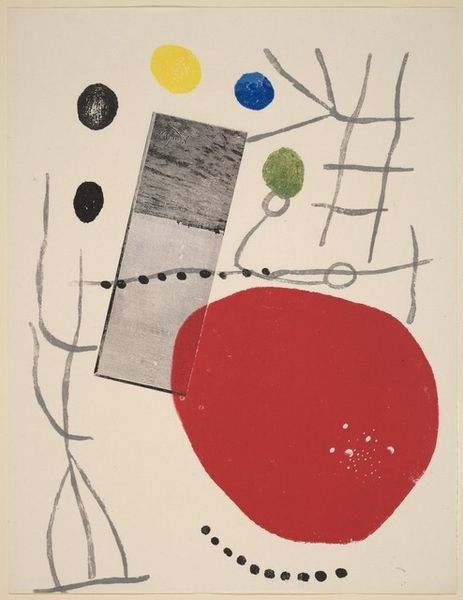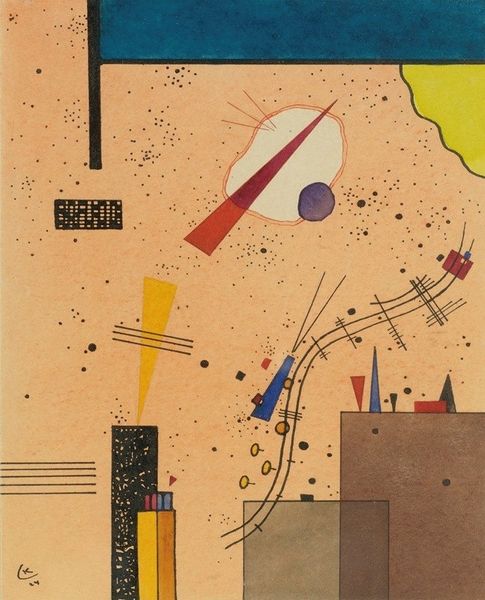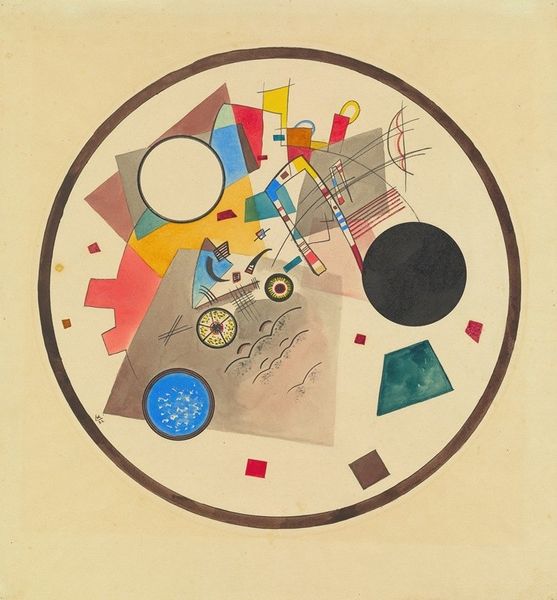
Copyright: Public Domain: Artvee
Kandinsky, in this work, "Frohlicher Augsteig," gives us a composition of geometric forms, floating in space, that invite a re-evaluation of the symbolic language of abstraction. The circle, for example, is a dominant motif, a symbol often associated with the celestial, with wholeness and cosmic unity, echoing motifs found in ancient mandalas and cosmological charts. Yet, here, it is deconstructed, fragmented, existing alongside squares and lines. Consider the psychological weight of the rising diagonal lines—visual indicators of upward movement which contrast with the static composure of the geometric shapes. This element of implied ascension can be traced back to the Baroque era, and before that, even to ancient depictions of spiritual transcendence. What unfolds is not a linear progression, but rather a cyclical return and reimagining of symbols, charged with emotional and psychological depth.
Comments
No comments
Be the first to comment and join the conversation on the ultimate creative platform.
